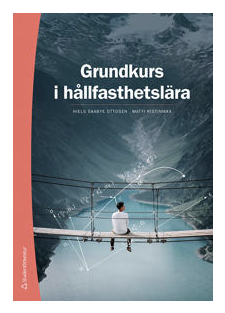Description
The book presents the basic basic rules within the theory of strength. The book is very useful for those who, for example, are studying a civil engineering education or university engineering education or are going to take a course in strength theory. It is also relevant for those of you who are interested in the subject and simply want to expand your knowledge in the field, but it is primarily produced as course literature.
The book focuses on providing insight into the basic concepts in strength theory, which are material relations, equilibrium and kinematics. The subjects are those used in the analysis of beams and shafts.
Other topics on which the book provides good information are strain, stress, and Hooke’s law for the general three-dimensional case that results in the elastic boundary value problem. This means that the book provides basic basic knowledge to then utilize courses where you have to solve strength problems and numerical methods. For example FEM (finite element method) and other topics you will come across during your course in strength theory or when studying for a civil engineering degree at university level.
The book falls under the category of building construction & building materials and is often used as course literature for those who are studying for, for example, civil engineering. It is brand new and was released on the market in March 2023. Thus, the book contains both current and basic knowledge in strength theory. The book is published by the publisher Studentlitteratur AB and contains 200 pages.
The authors
The book is written by the author duo Niels Saabye Ottosen and Matti Ristinmaa, who are behind other types of course literature in strength theory.
Niels originally comes from Denmark, where he began his career in strength theory. In 1985 he obtained his doctorate at LTH and since 1991 has been a professor at LTH. He has so far written four books and conducts research on the subject.
Matti is a researcher at Lund University and conducts studies in continuum mechanics, material modeling, computational mechanics and smart materials, among other things. In 1991 he obtained his doctorate in strength theory and since 2001 is a professor in nanoscience and semiconductor technology at Lund University in the strength theory department.

Reviews
There are no reviews yet.